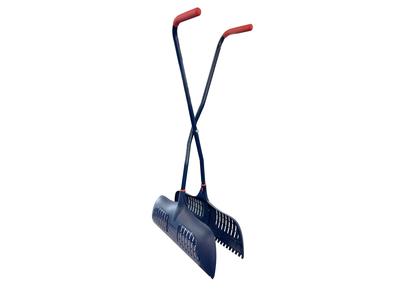
What to do with Autumn leaves
With autumn comes a freshening of the air, much needed after the heat and haze of summer. With autumn rains and some crisp frosty mornings, the garden relaxes. Trees show their autumn colours and leaves start to fall. Herbaceous plants fade, leaving their winter stems if they’re strong in structure, or turning to mush if they’re soft. They too add to the layer of decaying plant material covering the ground. After some of the hottest UK days on record, our gardens have dealt with extreme stress this year. Autumn is generally a time when the baked summer soils soften under cloudy damp days, and worms rise to the surface to coil up leaves as they fall.
Don’t be too hasty to tidy up leaves. With a little knowledge and a keen eye, you can make the most of the benefits autumn leaves offer in some areas, and avoid the problems they cause in others. All in all, a considerate approach to leaf clearance not only saves time, it helps your garden shine.
Firstly, leaf litter provides a free mulch for the soil. A layer of leaves suppresses the germination of many weed seeds, and a really deep layer of leaves can suppress the less vigorous perennial weeds. However, if you want things like foxgloves and welsh poppies to self-seed, make sure to bare some earth for their seedlings to emerge,
Worms and other creatures feed on the leaves and bring them down into the soil. The soil opens up structurally, letting air in for plant roots, and providing pores for rainwater to trickle down into the soil, rather than flowing off the surface. Beneath the leaves the soil will look like a light and fluffy crumble topping, rather than dense brick. This helps keep your plants healthy throughout the year, but especially important in winter, as good soil aeration and drainage helps prevent the many hazards of cold anaerobic and waterlogged soils; such as phytophthora, and a range of other bacterial and fungal pathogens.
If you don’t like the look of the leaf litter, they can be raked off, but try to make sure their equivalent organic matter is returned in another way. For example, composting them on their own (to make leafmould) or in a mix with other things to make garden compost. This will give you nice rich dark mulch to return to the beds, but you’d be amazed how much it shrinks in volume once composted.
Be sure to collect leaves fallen onto woody evergreens, such as conifers, evergreen azaleas, and Mediterranean and silver-leaved plants such as lavender, rosemary, and artemisia. This prevents combined moisture and shading that causes decay of foliage, which if happens at a high rate, can kill the plant or at least cause severe damage. Lawns will also suffer if buries in leaves for an extended period.
Autumn leaves need not be the bane of one's life. Collected from a sensitive spot, and allowed to nourish the soil under trees, hedges and tougher areas of planting, leaves are a valuable resource to be celebrated.


